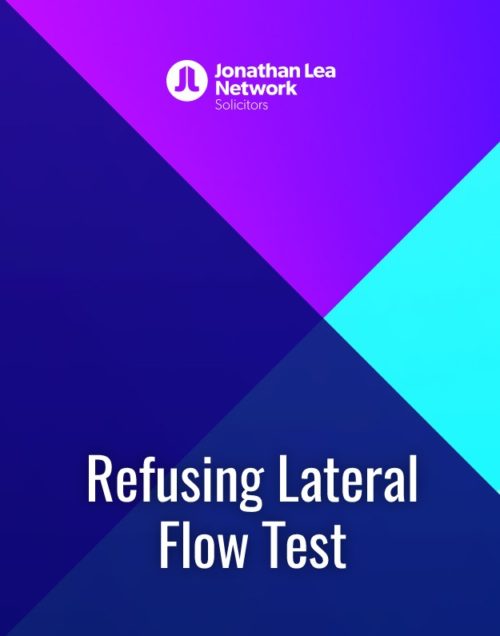Digital Agency Services Agreement
£6.99
This product constitutes an easily adaptable pro forma digital agency services agreement, together with a set of tailored guidance notes which aim to se out how to correctly fill-out the template and explain all significant provisions so as to allow you to put into effect a valid and legally binding agreement.
Our template is effectively a supply of services agreement which can be adapted for use in either business to business (B2B) or business to consumer (B2C) contracts. It has been drafted mainly from the company’s perspective and therefore contains all of the usual provisions to afford the company sufficient protection. The template will be suitable for situations where a client (either an individual or a company) wishes the company to provide digital agency services to it subject to the terms of the agreement.
Further down the page are our guidance notes relating to this template which you will also receive as a separate document when you buy the product.
Clause breakdown
Clause 1 (Definitions and Interpretation)
Clause 1.1 sets out the definitions that will apply throughout the employment contract. Clauses 1.2 – 1.6 are standard interpretation clauses that are used in most commercial contracts.
Clause 2 (Provision of Services)
Clause 2 sets out the principal obligations of the company with regard to the services. Essentially the company is responsible for developing the deliverables (as defined) as set out in schedule 1 and agrees to provide the services (as defined) to the client during the time that the contract is in place between the parties in accordance with the agreement.
Clause 2.2 states that any performance dates specified in schedule 1 (or otherwise agreed between the parties) are estimates only and the clause further states that time shall not be of the essence for the provision of the services. The significance of this is that if time is of the essence for a contractual obligation in commercial contract, this means that the performance date / deadline is a condition of the contract, rather than merely a term, entitling the innocent party (but not obliging them) to terminate the contract even if the performance date / deadline is only narrowly missed. Making time not of the essence therefore protects the company’s interests and it will be for the parties to decide between themselves (with relevant legal advice obtained) whether to make time of the essence for the provision of the services or not.
Clause 2.3 will be necessary / applicable where the arrangement between the parties involves design work. The clause states that in such a case the project specification set out in schedule 1 will apply and that specification will set out the full concept, design and work that is required to be performed by the company for the benefit of the client. Clauses 2.3(a) and (b) add a further layer of detail where such design work involves the design and development of a website.
Clause 2.4 aims to make the client aware of various things (and seeks to protect the company) in circumstances where search engine optimisation (SEO) services are being provided under the agreement.
Clause 2.5 provides that the company will ensure regular marketing activity takes place on the client’s social media platforms (as specified in schedule 1) where the company has agreed to provide the client with social media marketing services. This will be with a view to helping the client establish an active presence on those platforms. The last sentence states that the client shall provide any necessary access credentials for such social media platforms when requested by the company so as to facilitate its provision of the services.
Clauses 2.6 and 2.7 are applicable where the agreement between the parties involves the development of software (clause 2.6) or involves video production (clause 2.7).
Clause 3 (Term of Appointment)
This clause makes clear that the agreement will begin on the commencement date and will remain in full force and effect until the services and the deliverables have been supplied by the company (and the full fee paid by the client), or until terminated sooner by either party under clause 15.
Clause 4 (Co-Operation)
This clause generally provides for the parties to co-operate with each other so as to facilitate the provision of the services and the deliverables. To this end, clause 4.1 states that the client shall co-operate with the company and clause 4.5 states that the company will co-operate with the client.
Clause 4.2 imposes an obligation upon the client to ensure that any details / information provided in schedule 1 (as well as any required content such as text, graphics and logos etc) to the company which it will use in its provision of the services shall be accurate, complete, up-to-date and in the agreed format.
Clause 4.4 states that the client will be responsible for the implementation of any website optimisation changes recommended by the company.
Clause 4.5 provides that the services will be provided by the company to the client in a timely fashion by skilled and experienced personnel using the reasonable care, skill and expertise to perform the services as can be expected from a competent digital marketing agency, subject to the client also meeting its obligations under the agreement. Section 13 of the Supply of Goods and Services Act 1982 implies a term that the supplier (in this case the company) will carry out the services with reasonable care and skill. Parties frequently seek to introduce a higher or more industry-specific standard, as in this clause.
Clause 4.6 states that the company will be transparent with the client at all times and keep them up to date of the progress of the services. Further the clause imposes on obligation on the company to inform the client of any substantial obstacles or likely delays in the performance of the services.
Clause 4.7 allows both parties to appoint a project representative who shall have authority to act on behalf of the party that appointed it. The project representative will manage and supervise the project and will have a contractual duty to act promptly, reasonably and fairly at all times during the term (as defined).
Clause 5 (Approvals, Authority and Acceptance Testing)
Clause 5.1 states that where the company requires the client’s input / feedback on the project generally or an aspect of the services, the client has an obligation to respond with the required feedback within 2 business days (as defined) after receipt of such details by the company. If the client fails to response within that period, the client will be deemed to have accepted such details. Notice that the time period here is highlighted and is in square brackets, meaning the parties can choose a shorter duration or a longer duration in which the client has to respond with its feedback when requested to do so by the company.
Clause 5.2 deals with the situation where the client reasonably declines to accept any of the deliverables (where such deliverables do not accord with the agreed project specification). It provides that the client must give (reasonable) written reasons for non-acceptance, following which the company will use its best and reasonable endeavours to correct and rectify any fault at its own cost. The company will then submit the revised / replaced deliverables to the client for their input / feedback (and the provisions of clause 5.1 will apply again).
Clause 5.4 is applicable where the services involve the development of software.
Clause 5.5 is applicable where the services involve website development and require the client to test the website thoroughly (this period being called the “Testing Period”).
Clause 6 (Changes to Work in Progress)
This clause sets out provisions allowing for / relating to changes to be made to work in progress. This may include changes to the scope of the services and / or a project specification (as outlined in clause 6.1).
Importantly clause 6.3 entitles the company to increase its fee where the client requires the company to complete the project sooner than was originally agreed (this increased fee is in consideration to the fact that the company will have to prioritise the client’s project ahead of other pre-planned work).
Clause 7 (Remuneration)
Clause 7.1 provides that the client will pay the company the fee (which will be determined depending on the nature and extent of the services) in consideration for the services. Schedule 2 sets out a payment schedule where the company can set out the specified proportions in which it will invoice the client for the fee.
This template agreement envisions the fee being payable in one of three ways:
- a) on a fixed monthly retainer basis;
- b) a fixed fee for a specific project; or
- c) on a time and materials basis in accordance with the company’s hourly charge-out rates.
Which way the fee is paid will be for the parties to each agreement to decide and whichever option is chosen, the fee and the corresponding payment deadlines should be set out in schedule 2 for reasons of certainty.
Clause 7.2 provides a non-refundable deposit to be paid by the client before the commencement of the project and that no work shall begin until the company has received such payment. If the parties have decided on a fixed fee, then the company could instead require that the entire fixed fee be paid upfront before commencement of work, in which case this clause will need to be adapted accordingly.
Clause 7.3 will need to be adapted where the fee will be payable in any other currency besides pound sterling. If VAT is to be included within the fee amount then again this clause will need to be adapted to reflect that.
Clause 7.4 states that ancillary costs (such as costs associated with the purchase or use of third party plugins or licences) are excluded from the fee. This means that the company will have the right to invoice the client for such ancillary costs where reasonably incurred in the completion of the services.
Clause 7.5 provides an important level of protection for the company. It deals with the situation where the company estimates the fee to be X amount, and the fee turns out to be more than that estimate. This clause shows the client acknowledging that where estimates are used, these are estimates only and the company will invoice the client for the actual number of hours spent in relation to the services. Effectively this clause means that if the company estimates that its fees will be £1,000, and they subsequently turn out to be £2,000 (or other higher figure), the client cannot protest and claim that a fee of £1,000 was agreed (as this clause confirms that the £1,000 figure is an estimate only and subject to change).
Clause 7.6 is similar to clause 7.4 outlined above but the former deals with reasonable out-of-pocket expenses whereas the latter relates to ancillary costs (as described within that clause). Clause 7.6 provides that reasonable out-of-pocket expenses may be charged by the company to the client provided that the company produces reasonable evidence of expenditure to the client. To this end the company is under an obligation to maintain records in respect of all expenditure that is reimbursable by the client under the agreement.
Clause 7.7 gives the company the flexibility and right to increase its annual charge-out rates by a percentage it thinks fit, provided that a certain number of days written notice is given to the client by the company. Note that the percentage increase and the number of days written notice that must be provided are highlighted and can be set at whatever the parties choose.
Clause 8 (Terms of payment)
Clause 8.1 regulates how long the client has to pay the company’s invoices. This has been set at 14 days but the company may wish to shorten this period and the client will want as long a period as is possible (what period is chosen depends on the negotiating strength of the parties).
Clause 8.2 states that the payments will be made in pound sterling to the nominated account of the company specified in writing to the client. As mentioned with clause 7.3 above, this clause will need to be amended where the payments under the agreement are to be made in a currency other than pound sterling. It will be up to the parties to agree what method is used to transfer the payments (i.e. BACS, CHAPS, cheque or bank transfer).
Clause 8.3 prevents the parties from deducting or withholding amounts (which they believe to be due to them) when paying any monies to the other party. This ensures that if party A owes party B £1,000, party A pays over £1,000 without any deductions.
Clause 8.4 gives the client the power to withhold payment of an invoice if that invoice (or part of it) is not in accordance with the terms of the agreement (i.e. the company bills the client for an amount not specified in the payment schedule in schedule 2). The client must notify the company in writing where they do this, indicating the reason for not paying the invoice and where the client only disputes part of an invoice, they must pay the undisputed part of such invoice.
Clause 9 (Late Payment)
This clause sets out the terms that will apply where the client fails to make any payment due to the company on the due date.
Overall late payment entitles the company to terminate the agreement where the client does not make payment within a certain number of days, to suspend the services until the company is repaid in full and to charge interest on the amount unpaid at the rate of 6% above the Bank of England base rate until payment is made by the client in full.
Clause 10 (Third Party Service Providers and Suppliers)
The clauses in this clause make clear that where the company engages third party service providers as part of its provision of the services, it will select such providers using reasonable care and skill and shall not be liable to the client for any delays / failings resulting from services provided by third party service providers.
If the company finds itself subject to surcharges from third party suppliers as a result of the client’s late payment, the client shall be liable to repay the company the amount of any such surcharge together with any interest charged by the supplier on the overdue amount.
Clause 11 (Intellectual Property)
This clause deals with intellectual property rights used in connection with the services.
Clause 11.1 provides that the company will be the legal and beneficial ownership of the deliverables until the client has paid its fees in full (this is to protect the company in the event of late payment by the client).
Clause 11.2 will be applicable where the services involve the development of software. This clause effectively provides that the company will own any intellectual property rights relating to the general functionality of any software developed under the agreement (as well as any related documentation). Elements of the software which do not form part of the generic functionality of the software or visual features / layouts which were created at the specific request of the client will be assigned to the client in accordance with clause 11.1 upon full receipt of all sums due by the company.
Clause 11.3 shows the company warranting (i.e. making a contractual promise) that any intellectual property rights created by third party consultants (and other third parties) for or on behalf of the company shall be assigned to the company by such third parties.
Clause 11.4 provides that the client materials and any intellectual property rights subsisting in such materials will remain the property of the client. The company will be using such materials on a royalty-free licence to the extent necessary to complete the project and carry out the services. This clause also gives the company the right to use the deliverables to promote its own business (for example by displaying the client’s name, logo and branding as a reference on the company’s website).
Clause 11.5 provides that the client has obtained all necessary permissions etc to use the client materials where such materials are owned or were created by a third party. The clause also confirms that the company has no responsibility for ensuring that the client’s materials carry with them the appropriate third party permissions for use and reproduction.
Clause 11.6 states that the company will provide any third party software to the client under the standard licence terms provided by those third parties (a copy of such terms to be given to the client by the company). Further, the client agrees to be bound by those licence terms and agrees not to tamper with the licensed software except as permitted by law. This clause also shows the client indemnifying the company against any loss, liability or damage that it may suffer or incur as a result of the client breaching this sub-clause.
Clause 12 (Confidential Information)
The confidentiality agreement in this agreement aims to ensure that:
- The confidential information (as defined) that is disclosed remains confidential and kept secret. Note that the last sentence of clause 12.2 (“This Clause 12 shall survive termination of the Agreement”) means that even after this agreement is terminated, the parties are under an obligation to keep any confidential information disclosed a secret.
- The party receiving the confidential information only uses the information in connection with the purpose of that agreement, and not for any other purpose.
Clause 12.1 does allow for confidential information to be disclosed by one party provided that the other party has obtained the other party’s prior written permission.
Clause 12.2 requires the party that receives confidential information to restrict disclosure to such of its employees, agents or subcontractors as need to know it for discharging that party’s obligations under the agreement. Such employees, agents or subcontractors will also be subject to obligations of confidentiality as well.
Clause 13 (Warranties and Indemnities)
Warranties are contractual statements that a given set of facts are true. A breach of warranty will only give rise to a successful claim in damages if the party making the claim can show that the warranty was breached and that the effect of the breach is that they have suffered loss as a result. The onus is therefore on the party making the claim to demonstrate breach of warranty and quantifiable loss.
An indemnity is a promise given by one party to the other in respect of a particular type of liability, should it arise.
Clauses 13.1 and 13.2 contain warranties. Clauses 13.3 and 13.4 contain indemnities.
Clause 13.5 provides that neither party is relying on any representation, warranty or other provision other than the ones that are expressly provided in the agreement. This means that the entire agreement between the parties is contained within the agreement and prevents either party from relying on pre-contractual statements or verbal agreements that may exist outside of the agreement itself. This clause also excludes implied statutory terms or provisions of common law (so far as the law allows). The clause contains various other warranties and this clause (as well as clause 13 generally) will need to be adapted to fit the circumstances of each individual transaction.
Clause 14 (Limitation of Liability)
Most of the business risk for the company will arise in connection with professional liability towards the client, principally, a failure by the company to supply the services to the client with reasonable care and skill.
Clause 14.1 has been included because a party cannot (as a matter of law) exclude liability for fraud, death or personal injury where such events were caused by its negligence. This clause therefore makes a virtue of necessity by stating that the parties are not seeking to exclude or restrict liability where to do so would be illegal or ineffective.
The parties may wish to consider agreeing time limits for notifying claims (reducing the usual six-year statutory limitation period for contract claims). This is the effect of clause 14.3 and protects the company by stating that it will have no liability or obligation under the warranties unless it has received written notice from the client highlighting the defect or error in question within 3 months following the client’s acceptance (or deemed acceptance) of the services.
Clause 14.4 caps the company’s entire liability (financially) to the total sums paid by the client to the company in the 6-month period prior to the claim.
Clause 14.5 shows the parties acknowledging and agreeing that the limitations of liability in clause 14 are reasonable – this prevents either of the parties coming back following a claim and arguing that the limitations were unreasonable.
Clause 15 (Termination)
This clause regulates how the parties can terminate the agreement.
Clause 15.1 sets out the notice period that one party must give to the other if it intends to terminate the agreement. The notice period is up for negotiation between the parties and notice of termination must be provided to the other party in writing.
Clause 15.2 allows either party to terminate the agreement by notice in writing to the other if the other party:
- commits a material breach of the agreement and fails to remedy such a breach within 14 days (this is called a ‘grace period’ and allows a party to remedy a breach of contract);
- becomes insolvent or is unable to pay its debts (within the meaning of the Insolvency Act 1968), or enters into compulsory or voluntary liquidation with its creditors etc;
- ceases, or threatens to cease, to carry on business.
Clause 15.3 provides that where a party provides the other with written notice of its intention to terminate the agreement, that party that wishes to terminate the agreement will still be required to uphold its rights, duties and responsibilities under the agreement during that period of notice.
Clause 16 (Survival of Obligations on Termination)
This clause relate to what obligations will survive the termination of the agreement.
Clause 17 (Advertising Standard and Levies)
This clause requires both parties to comply with applicable laws and advertising regulations where relevant.
Clause 17.2 imposes an obligation on the client to notify the company without delay where the client believes that any advertising submitted to the client by the company for approval is false or misleading or contrary to any law or applicable advertising regulation.
Clause 18 (Data Protection)
As the parties to an agreement of this nature will more than likely be processing personal data, this provision has been included to ensure that both parties comply with their GDPR obligations in respect of such data.
Clauses 19 – 31 (Boilerplate clauses)
Clauses 19 – 31 of the digital agency services agreement template are called “boilerplate” clauses. These kinds of provisions are repeated in all kinds of contracts and are responsible for regulating the operation of the contract.
Boilerplate clauses do not usually contain the commercial terms that vary from one transaction to another.
Boilerplate clauses are often standard, and most are not typically heavily negotiated. They are nevertheless important as many contractual disputes depend on the drafting of boilerplate clauses such as entire agreement clauses.
All of the boilerplate clauses contained within this template use standard wording and are drafted as they would be for most commercial contracts.
Note on clause 26 (Counterparts) – This clause provides that the parties to the digital agency services agreement may execute (i.e. sign) separate copies of it, rather than all parties having to sign the same physical copy of the agreement. Using a counterparts clause is advisable for reasons of certainty and to prevent any argument that the agreement is not binding because it has not been properly executed.
Schedule 1
This is where the details of the project are to be articulated and set out. This schedule will set out the services to be provided by the company to the client and will also include a project specification where necessary.
We have contained wording here in italics to assist you with completing this schedule.
Schedule 2
This schedule will set out information relating to the payment of the company’s fees by the client. Here you should set out how the fee is to be paid (i.e. whether on a fixed fee basis, a retainer basis etc) and whether a deposit is payable upfront.
You can also set out that specific amounts will become payable once certain milestones in relation to the services / deliverables or the project generally are reached.









